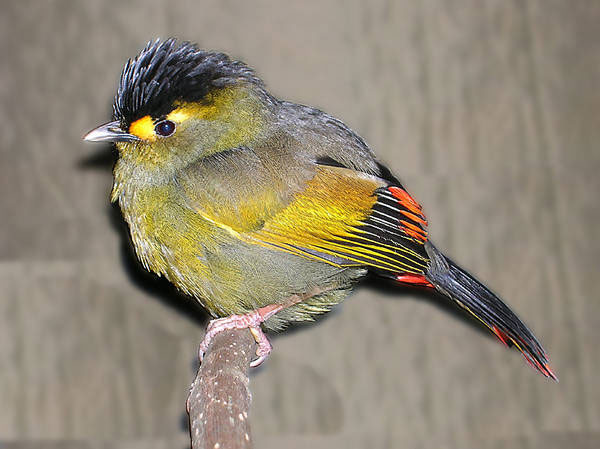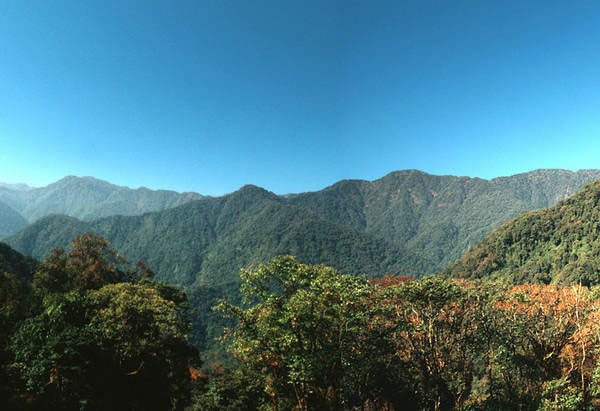Bugun Liocichla

Bugun Liocichla Presumed male Bugun Liocichla Liocichla bugunorum. Photographs, tail feathers, and sound recordings were used to describe the newly discovered species (photo: Ramana Athreya).
A professional astronomer has made the most sensational ornithological discovery in India for more than half a century.
Birdwatching at Eaglenest Wildlife Sanctuary, Arunachal Pradesh, in January 1995, Ramana Athreya glimpsed two liocichlas (a kind of Asian babbler) which did not fit any field guide descriptions.
Ten years passed before he saw the birds again. A colleague identified them — from Athreya's field sketch — as Emei Shan Liocichla Liocichla omeiensis.

Emei (Omei) Shan Liocichla The new species's closest relative, Emei (Omei) Shan Liocichla Liocichla omeiensis, is endemic to mountains in south-west China. The nearest record is over 1,000 km from Eaglenest (photo: Donglei).
But Emei Shan Liocichla is endemic to mountains in south-west China. The nearest record was over 1,000 km from Eaglenest.
With Forest Department permits, Athreya mist-netted one bird in May 2006. After detailed notes and photographs — and feathers which had worked loose in the net — he released it. Similarities suggested it was closely related to Emei Shan Liocichla, but many differences in plumage and calls, especially song, indicated a new species. Bugun is about 10% larger in all measurements except the beak, which is smaller.
Since such a spectacularly colourful bird (with equally distinctive calls) had been overlooked during several years of surveys at Eaglenest, Athreya felt the population might be too small to withstand the loss of an adult bird. Instead, feathers from the mist-net have been designated the holotype.
Most sightings have taken place in community forest belonging to the Bugun tribe, so Athreya has proposed the name Bugun Liocichla Liocichla bugunorum. The formal description appears in Indian Birds, where a PDF of the paper can be downloaded.
Athreya's observations account for a total of 14 individuals, but he thinks the species may eventually be discovered in adjacent Bhutan and elsewhere in Arunachal Pradesh.
All sightings except one have been on hillsides over 2,000 metres, among dense scrub and small trees remaining after logging. "Clearly the species can exist in disturbed areas and utilise different vegetation," Athreya says. "This is more or less identical to the habitat preference of Emei Shan Liocichla." This versatility is at odds with the small, highly local populations.

Eaglenest, Arunachal Pradesh There are plans to build a highway through the Bugun Liocichla's core habitat at Eaglenest, Arunachal Pradesh (photo: Ramana Athreya)
There are plans to build a highway through Eaglenest, passing through Lama Camp where most sightings have taken place. "The birds survive but clearly they don't thrive. A busy highway could well push this spectacular bird into local extirpation, which could also be extinction."
The prospect of income from ecotourism provides a major incentive to protect Eaglenest. Athreya, in partnership with Indi Glow of the Bugun tribe, is developing an ecotourism project to benefit the local community.
To find more similar stories, why not subscribe to BirdLife International's World Birdwatch magazine.

